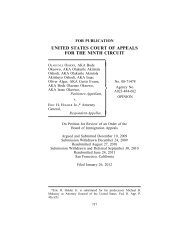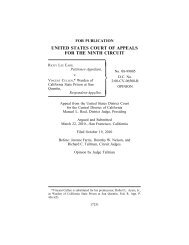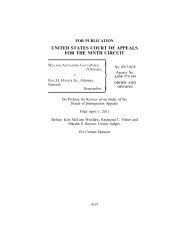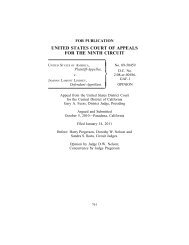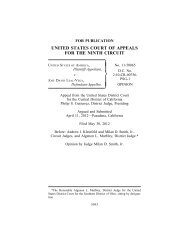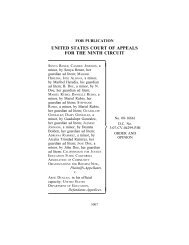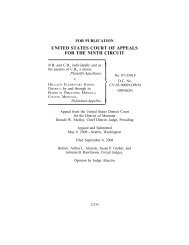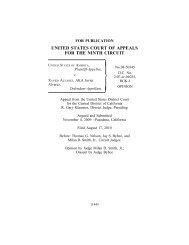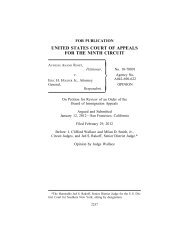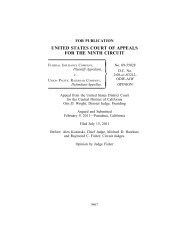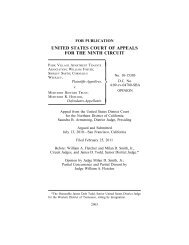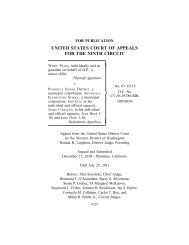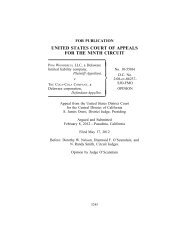kristin rossum v. deborah patrick - Ninth Circuit Court of Appeals
kristin rossum v. deborah patrick - Ninth Circuit Court of Appeals
kristin rossum v. deborah patrick - Ninth Circuit Court of Appeals
You also want an ePaper? Increase the reach of your titles
YUMPU automatically turns print PDFs into web optimized ePapers that Google loves.
17402 ROSSUM v. PATRICK<br />
son commented to one <strong>of</strong> the toxicologists at the OME that he<br />
had looked at a sample <strong>of</strong> de Villers’s stomach contents.<br />
That same day, November 8, Russ Lowe—the veteran<br />
OME employee who served as acting laboratory manager<br />
before Robertson supplanted him—called the police to report<br />
Rossum’s and Robertson’s affair. Lowe’s call was a turning<br />
point in the investigation, focusing the police’s attention on<br />
the possibility <strong>of</strong> foul play.<br />
Toxicology tests showed that de Villers’s autopsy specimens<br />
contained extraordinarily high concentrations <strong>of</strong> fentanyl,<br />
as well as a smaller amount <strong>of</strong> clonazepam and a trace<br />
level <strong>of</strong> oxycodone. Dr. Blackbourne characterized the concentration<br />
<strong>of</strong> clonazepam found in de Villers’s blood as a high<br />
therapeutic level, but not at the level <strong>of</strong> an overdose and “not<br />
fatal.” He conceded, however, that sometimes postmortem<br />
testing reveals a lower concentration <strong>of</strong> a drug than had previously<br />
been present in the body. The jury also heard testimony<br />
that oxycodone, which is an opiate, and clonazepam, a benzodiazepine,<br />
can have a “synergistic” effect on each other,<br />
meaning that each drug is made more powerful when taken<br />
with the other.<br />
The discovery <strong>of</strong> fentanyl in de Villers’s samples was<br />
unexpected; the OME did not ordinarily test for it; Pacific<br />
Toxicology, the outside laboratory to which the samples were<br />
first sent, did so regularly. After receiving the test results, Dr.<br />
Blackbourne concluded that de Villers died <strong>of</strong> acute fentanyl<br />
intoxication.<br />
Prior to Rossum’s trial, de Villers’s samples were also sent<br />
to two other laboratories for testing: the Alberta Office <strong>of</strong> the<br />
Chief Medical Examiner in Canada and Associated Pathologist<br />
Laboratories in Las Vegas, Nevada. As the following<br />
chart demonstrates, the concentration levels <strong>of</strong> fentanyl measured<br />
by the different laboratories varied:



